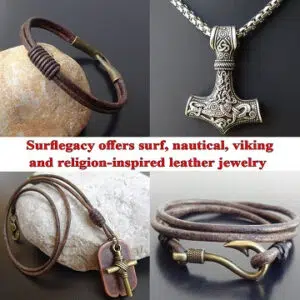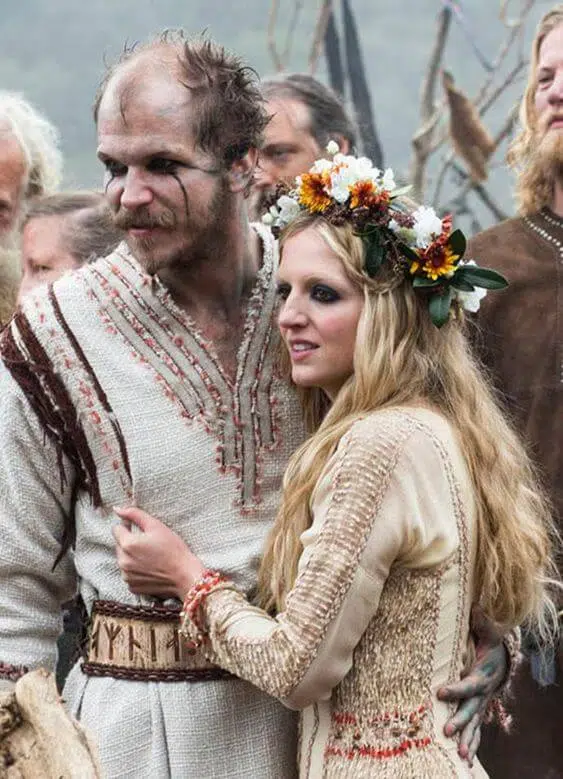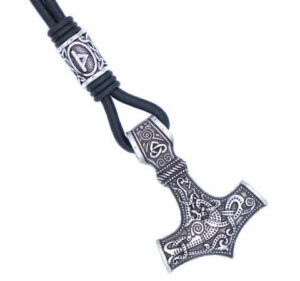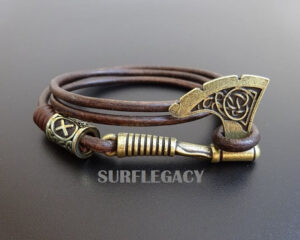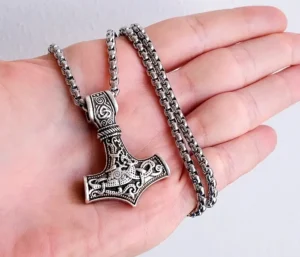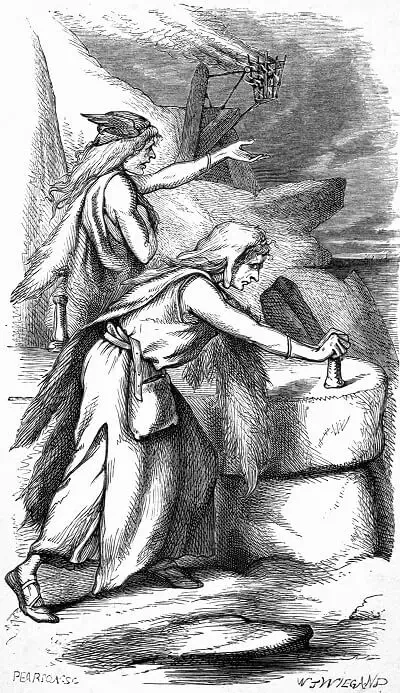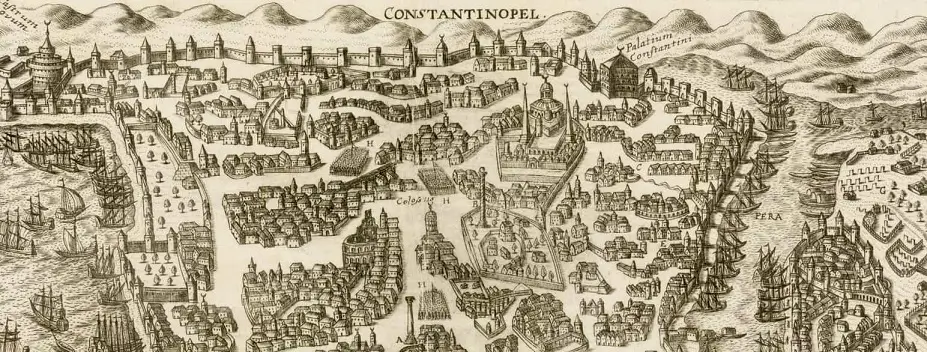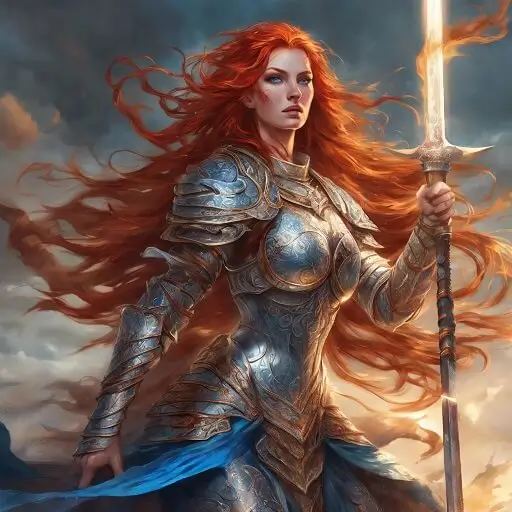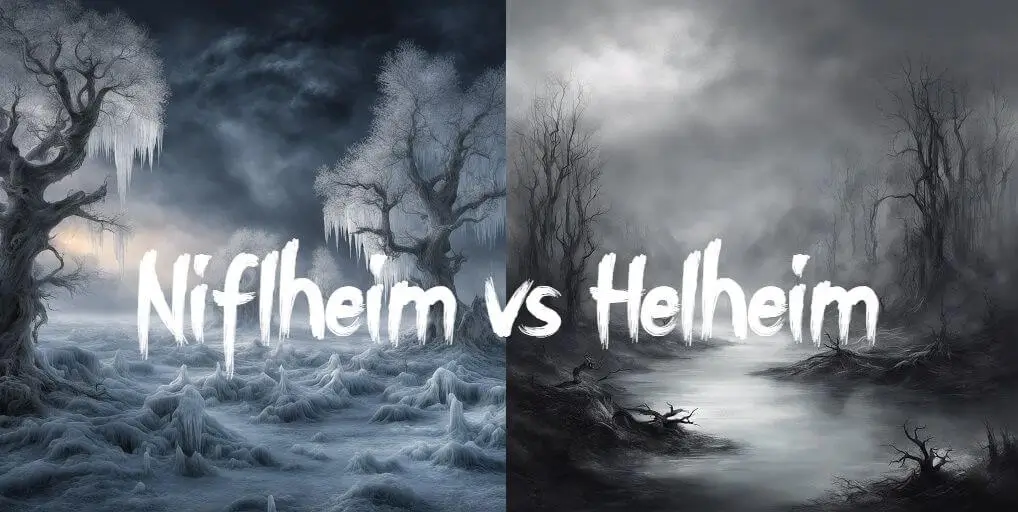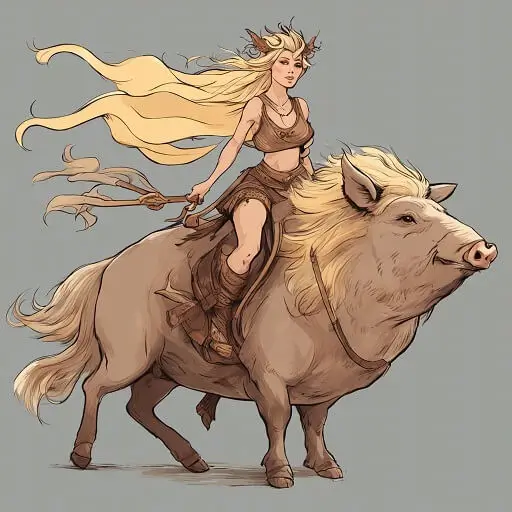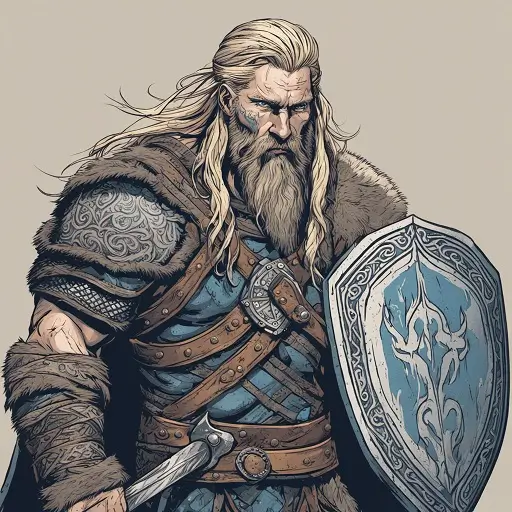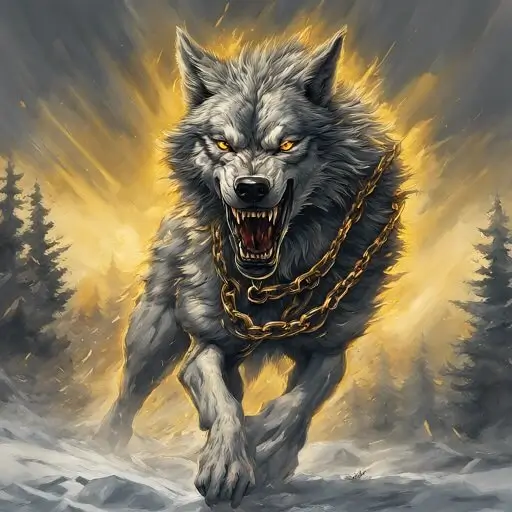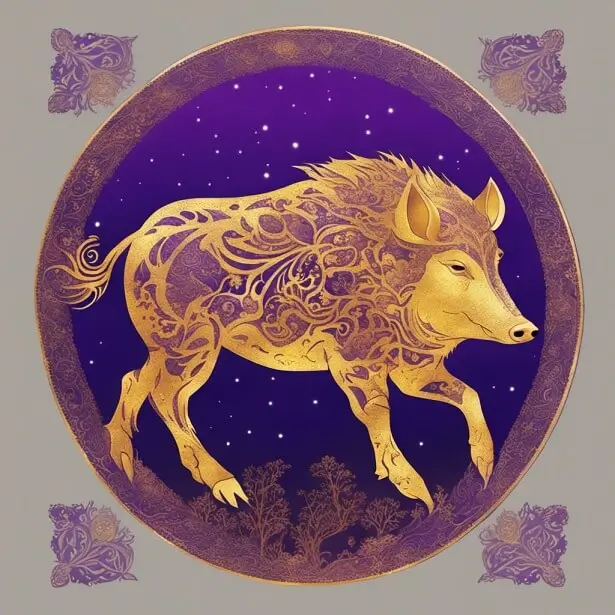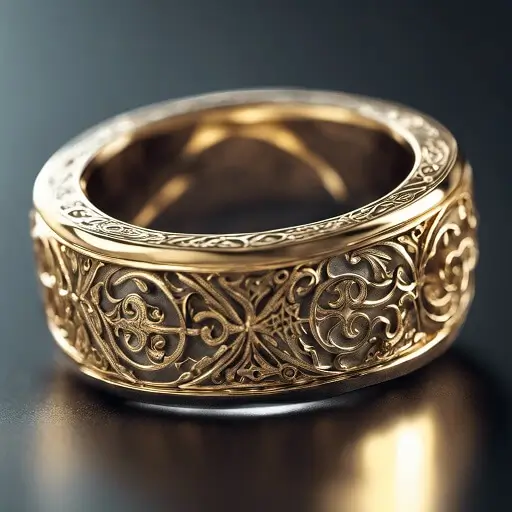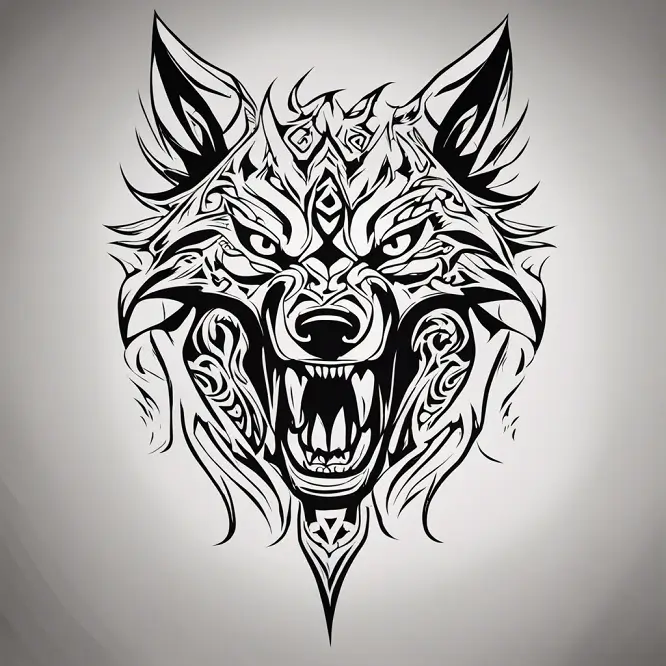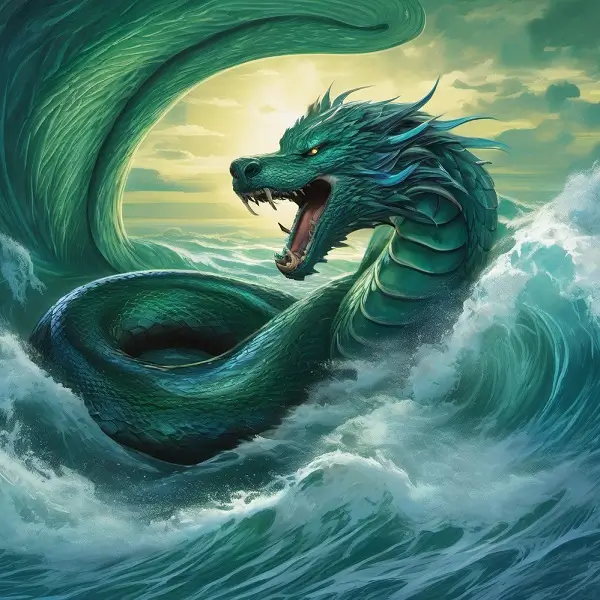A Viking wedding: what does this phrase bring to mind? Perhaps a grand celebration steeped in age-old traditions, elaborate rituals, and a distinct cultural charm that harks back to the days of Norse mythology.
Viking weddings, as one might imagine, were not a simple affair. They were an intriguing blend of heartfelt traditions, elaborate rituals, and symbolic practices deeply rooted in their culture and beliefs.
In this comprehensive blog post, we’ll delve into the mystical world of Viking wedding ceremonies, exploring their significance in Norse society, and how these ancient customs continue to influence modern-day nuptials.
Whether you’re a history enthusiast, a fan of Norse mythology, or perhaps even planning a Viking-themed wedding yourself, this post promises to be an enlightening journey into the past.
So let’s embark on this voyage back to the era of the Vikings, unearthing the fascinating traditions of their wedding ceremonies.
Viking Wedding – An Overview
In order to truly appreciate the depth and richness of a Viking wedding, we must first understand its historical significance and the societal norms of Viking marriages. Indeed, Viking weddings were not simply about celebrating love and unity; they were deeply ingrained in the fabric of Viking society, intertwined with their beliefs, laws, and customs.
Viking weddings were considered pivotal societal events, strengthening alliances, consolidating power, and often, even marking the transition from childhood to adulthood. Interestingly, the concept of marriage in Viking society was notably practical, seen as much as a social and economic alliance as a romantic union.
Both families involved would carefully negotiate terms, including dowries and alliances, making the wedding an affair of profound political and economic importance.
The societal norms surrounding Viking marriages further illustrate this pragmatism. Marriages were usually arranged, with both the bride and groom having limited say in their choice of spouse. The focus was more on the joining of influential families, and the enhancement of wealth and status.
Nevertheless, the concept of love and respect wasn’t alien to the Vikings. Love was often a desirable outcome of marriage, but it wasn’t necessarily a precondition. In fact, there were several laws and customs designed to ensure the fair treatment of women in marriage, showcasing a degree of respect towards women that was somewhat unique for the period.
Now, let’s travel back in time and uncover the fascinating traditions leading up to a Viking wedding. What rituals did they perform before the ceremony? Let’s explore this in our next section.
Pre-Wedding Viking Traditions
Before embarking on the grand celebration of the wedding itself, Viking couples partook in several essential pre-wedding traditions. These customs were as much about ensuring a prosperous future for the couple as they were about celebrating their impending union.
The Viking marriage process began with a ceremony known as a ‘betrothal’. This was an agreement between the two families, negotiated and confirmed by the exchange of dowries. The bride’s family would present a dowry, often in the form of land, livestock, or other valuable assets, to the groom’s family.
In return, the groom’s family would gift something of equal value to the bride’s family, symbolizing mutual respect and understanding. This process underlined the importance of equality in Viking society and reinforced the notion of marriage as a union of families rather than just individuals.
A unique and special tradition followed the betrothal, known as the ‘morning gift’. This was a present the groom gave to his bride the morning after their wedding. It was a testament to the groom’s commitment to providing for his wife and could range from precious jewelry to land. This gift had deep symbolic meaning, affirming that the groom was capable of supporting his wife and future family.
These pre-wedding traditions played a crucial role in laying a solid foundation for the marriage. They were not merely transactions but embodied the essence of Viking societal norms – practicality coupled with a deep respect for balance and reciprocity.
The journey to the altar for a Viking couple was filled with such meaningful traditions. In the following sections, we will reveal more about the rituals and customs that made Viking weddings such a fascinating blend of societal values and personal commitment. Stay tuned as we venture further into the heart of the Viking wedding ceremony.
The Viking Wedding Ceremony
At the heart of the Viking wedding celebrations was the ceremony itself, a grand affair marked by profound rituals, symbolic gestures, and shared community joy. It was at this moment that the couple officially tied the knot, surrounded by family, friends, and well-wishers.
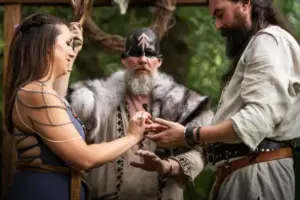
Credit Joshua Butler
One of the most unique and engaging traditions in a Viking wedding ceremony was the “Bride Running” event. In this fun-filled race, the bride and groom, along with their wedding guests, ran from the bride’s home to the location of the wedding feast. The catch? The party that arrived last at the feast had to serve the mead for the rest of the night! This tradition was a way of incorporating community participation and festivity into the ceremony, fostering camaraderie and a sense of shared celebration.
Another vital part of the Viking wedding ceremony was the symbolic “Sword Ceremony.” The groom would present his bride with the ancestral sword of his family, a gesture denoting his trust in her as his equal. In turn, the bride would keep this sword safe for their future son. This ritual was a potent symbol of trust, lineage, and the critical role of the woman in preserving and passing on heritage.
The wedding ceremony, although led by the couple, involved various participants. Family members from both sides had significant roles in the proceedings, as did the community leaders and elders. There was also often a figure akin to a priest, known as a ‘gothi’, who would officiate the ceremony, blessing the couple and ensuring the proper performance of rituals.
Each element of the Viking wedding ceremony was steeped in tradition and symbolism, reflecting the values and beliefs of their society. It was not just a joining of two individuals, but an intricate ritual of binding families, forging alliances, and celebrating the continuity of lineage and heritage. As we move on to the wedding feast in our next section, we’ll see how the Vikings knew not just how to honor their traditions, but also how to celebrate in style.
The Wedding Feast
Once the wedding ceremony was complete, it was time for arguably the most eagerly anticipated part of any Viking wedding – the feast. For the Vikings, a wedding was as much a community celebration as it was a family event, and the feast was where this sense of communal revelry truly came alive.
The wedding feast was more than just a meal; it was a lavish display of hospitality, abundance, and joy. Typically held in a large hall, the feast could last anywhere from one day to an entire week, depending on the wealth and status of the families involved. This grand feast was seen as a testament to the couple’s future prosperity and was an integral part of the wedding celebrations.
So, what did a traditional Viking wedding feast entail? The menu was a veritable smorgasbord of hearty and robust dishes. Meat, particularly pork and lamb, was a staple, often roasted or stewed to perfection. Fish, too, was a common sight at these feasts, especially in coastal areas. Alongside these were an assortment of bread, cheese, fruits, and nuts, offering a rich and varied diet that showcased the bounty of Viking lands.
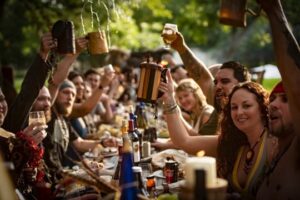
Credit Joshua Butler
As for drinks, the star of any Viking feast was undoubtedly mead. This sweet, fermented honey drink was seen as a luxurious beverage, fit for special occasions like weddings. Legend had it that a couple should drink mead for a full moon cycle after their wedding, believed to promote fertility. Hence, the term ‘honeymoon’ was born.
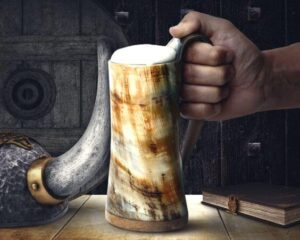
The wedding feast was a microcosm of Viking life, encapsulating their love for food, drink, and merry company. As we explore more Viking wedding traditions in our upcoming sections, it becomes increasingly evident how these age-old customs are not just historical practices, but also a testament to the Vikings’ zest for life and community spirit. Stay with us as we journey further into the post-wedding customs in the following section.
Post-Wedding Customs
Even after the culmination of the grand wedding feast, the festivities were far from over in a Viking wedding. The post-wedding customs were equally significant, laden with symbolic gestures that emphasized the roles and responsibilities of the newly married couple.
One such tradition was the bridal procession. Following the feast, the groom would escort his bride to their new home, accompanied by a torch-lit procession of their guests. This procession was more than a simple walk; it was a symbolic journey, signifying the bride’s transition from her old family to her new one. The path chosen for the procession was often strategic, avoiding places believed to be inhabited by evil spirits.
Then came one of the most intimate and essential traditions, the bedding ceremony. This was the first time the couple would share a bed, a moment laden with implications of fertility and continuity of lineage. Often, a group of ‘bed witnesses’ would escort the couple to their bed, ensuring the marriage was consummated.
In Viking society, fertility was deeply valued, linked with prosperity, and the continuation of the family line. The emphasis on fertility and family in these post-wedding traditions underscores the practical and societal implications of a Viking marriage.
A Viking wedding, therefore, was more than a ceremonial union; it was a lifecycle event, steeped in traditions that celebrated love, unity, and the continuation of family lineage. As we delve deeper into Viking wedding customs and symbols in the following sections, we’ll discover more about their rich heritage and timeless appeal.
Viking Love and Wedding Symbols
Symbols played a vital role in Viking culture, embodying their beliefs, aspirations, and respect for the divine. These symbols were prominently featured in Viking weddings, each one imbued with deep meanings related to love, unity, protection, and prosperity.
One of the most potent symbols used in Viking weddings was Thor’s Hammer, also known as Mjölnir. Thor, the god of thunder and protector of mankind, was a revered figure in Norse mythology. His hammer, believed to bring blessings and protection, was a popular amulet during weddings. The groom often wore a Mjölnir pendant, symbolizing his commitment to protect his new family, much like Thor protected mankind.
Other symbols included the rune of Gebo, which stood for generosity and mutual exchange – a key element of Viking marriages, and the Ingwaz rune, symbolizing fertility and new beginnings.
Viking axe with Gebo rune
These symbols were not just ornamental but were deeply ingrained in the Viking worldview. They served as constant reminders of the values and divine blessings associated with marriage. They brought an extra layer of depth and meaning to the Viking wedding, making it a truly spiritual and profound event.
In our final section, we’ll explore how these ancient Viking wedding traditions have shaped and influenced modern wedding customs. Stay tuned to uncover the lasting legacy of Viking weddings.
Viking Wedding Influence on Modern Weddings
The echoes of Viking weddings resonate even today, centuries after the last longship sailed. Their wedding traditions, full of symbolism and communal spirit, continue to inspire and influence modern wedding customs in fascinating ways.
One clear example of Viking influence can be seen in the modern tradition of the “Bride’s Racing” or “Running of the Bride,” a fun adaptation of the ancient Viking “Bride Running” tradition. It involves a light-hearted race, bringing a sense of playfulness and community participation into the wedding celebrations.
The Viking tradition of exchanging rings during the betrothal has also found its way into modern wedding customs. Today, the exchange of engagement rings symbolizes mutual commitment, a nod to the practical and balanced approach Vikings had towards marriage agreements.
Modern couples, especially those of Norse or Scandinavian heritage, often incorporate Viking wedding symbols in their ceremonies. Thor’s Hammer pendants and Freya‘s Love Knot motifs can be found in wedding decorations, attire, and even the wedding rings themselves, infusing the ceremony with a touch of Norse mythology and symbolism.
The “morning gift” tradition, too, has a modern equivalent in the form of the tradition of grooms giving their brides a special gift on the wedding day or after the first night together.
Perhaps the most enduring legacy of Viking weddings, however, is the emphasis on community, equality, and shared celebration. From elaborate wedding feasts to communal participation in ceremonies, the essence of a Viking wedding was a shared joy, a spirit that remains at the heart of most wedding celebrations today.
The rich traditions and customs of Viking weddings, thus, continue to live on, beautifully interwoven into the tapestry of modern marriage ceremonies. Their timeless appeal lies in their celebration of love, unity, and community, values as relevant today as they were in the times of the Vikings.
Viking Wedding – Faqs
What did a Viking bride wear for her wedding?
The Viking bride’s attire was an essential part of the wedding ceremony. She would typically wear a long, tunica-style dress made from wool or linen. Over this, she wore a pinafore-like garment called a hangerok, often adorned with brooches. She also wore a unique bridal crown known as a bridal circlet.
What did a Viking groom wear for his wedding?
Just like the bride, the groom also had special attire for the wedding. He would typically wear trousers and a tunic, often richly decorated. Symbolic accessories like Thor’s hammer pendant were also a common part of the groom’s wedding attire.
How did Vikings propose for marriage?
Unlike the modern tradition of proposing with a diamond ring, Viking proposals were more of a family affair. The groom’s family would approach the bride’s family, proposing the marriage and negotiating the terms, including dowries. This mutual agreement between families marked the start of the marriage process.
Did Vikings have wedding rings?
Yes, Vikings had wedding rings. They would exchange rings during the betrothal ceremony. However, unlike modern rings, Viking rings were often made of gold or bronze and inscribed with runes or other symbolic designs.
How did Vikings celebrate their first anniversary?
While we don’t have precise details about how Vikings celebrated their anniversaries, their focus on family and shared celebration suggests that anniversaries would likely have been community affairs, with feasting and merriment.
What were Viking wedding vows like?
There’s no exact historical record of specific Viking wedding vows. However, given the practical and balanced nature of Viking marriages, it’s plausible to believe that the vows would reflect commitment, mutual respect, and the readiness to share the joys and challenges of life together.
Were Viking weddings only for the elite?
No, weddings were a part of life for all strata of Viking society. However, the scale and grandeur of the wedding ceremonies and feasts would vary based on the family’s wealth and status.
Final Thoughts
In conclusion, a Viking wedding was a profound blend of tradition, symbolism, and communal celebration. Each aspect, from pre-wedding rituals to post-wedding customs, was imbued with significance and the Viking spirit of unity, bravery, and prosperity.
These age-old traditions continue to fascinate us, influencing modern nuptial practices and lending a timeless charm to our understanding of Viking culture. As we celebrate weddings today, we carry with us echoes from the past, reminding us of our shared human history and the enduring power of love and unity.
Shop Viking Jewelry
Are passionate about Vikings or Norse Mythology? Finding the ideal piece of Norse Jewelry can be challenging and time-consuming, especially if you lack inspiration or don’t know where to look.
Surflegacy, has you covered. We have a wide range of Viking Jewelry in various styles, shapes, colors, and materials, to accentuate your Viking spirit and look.
